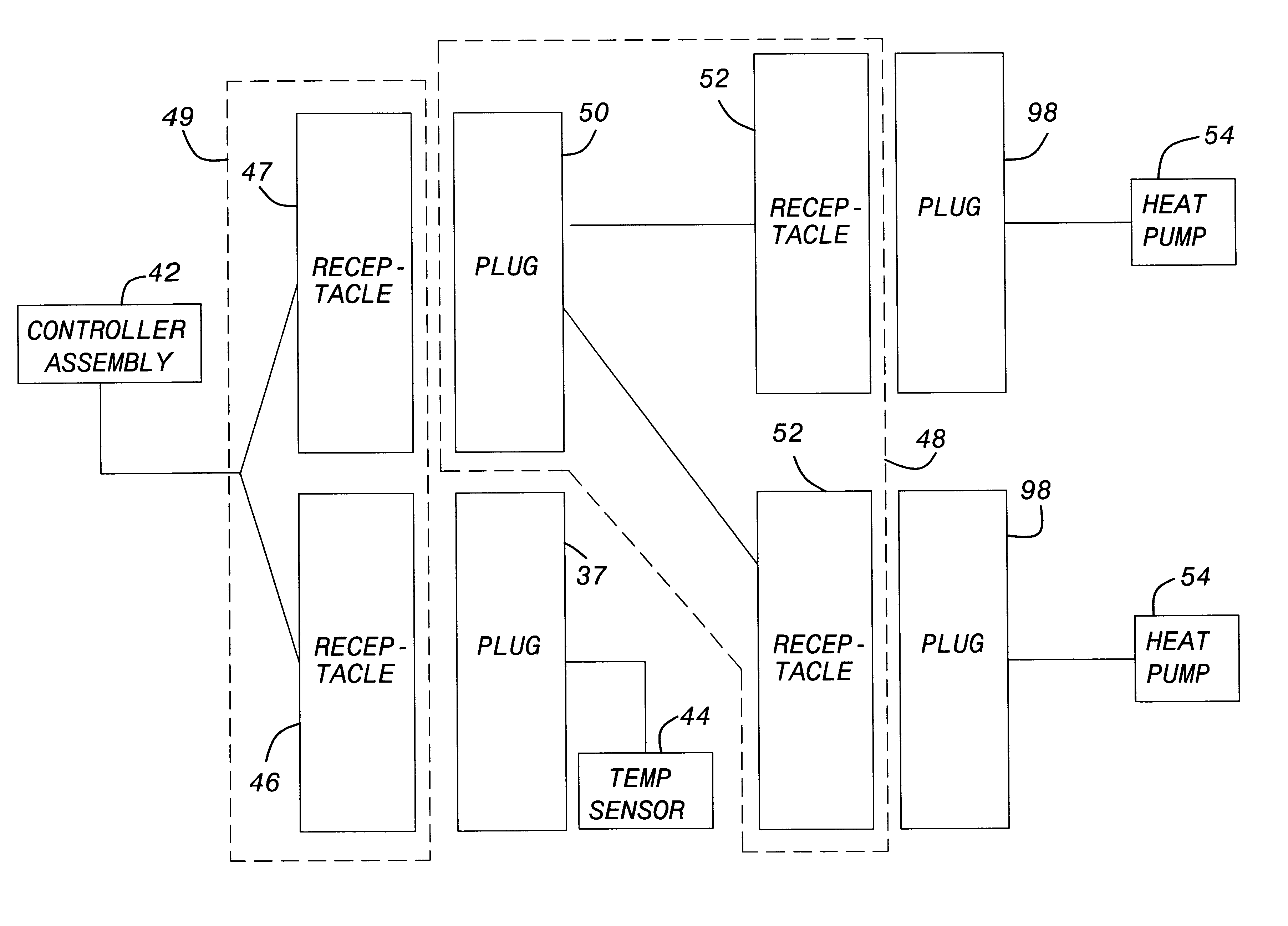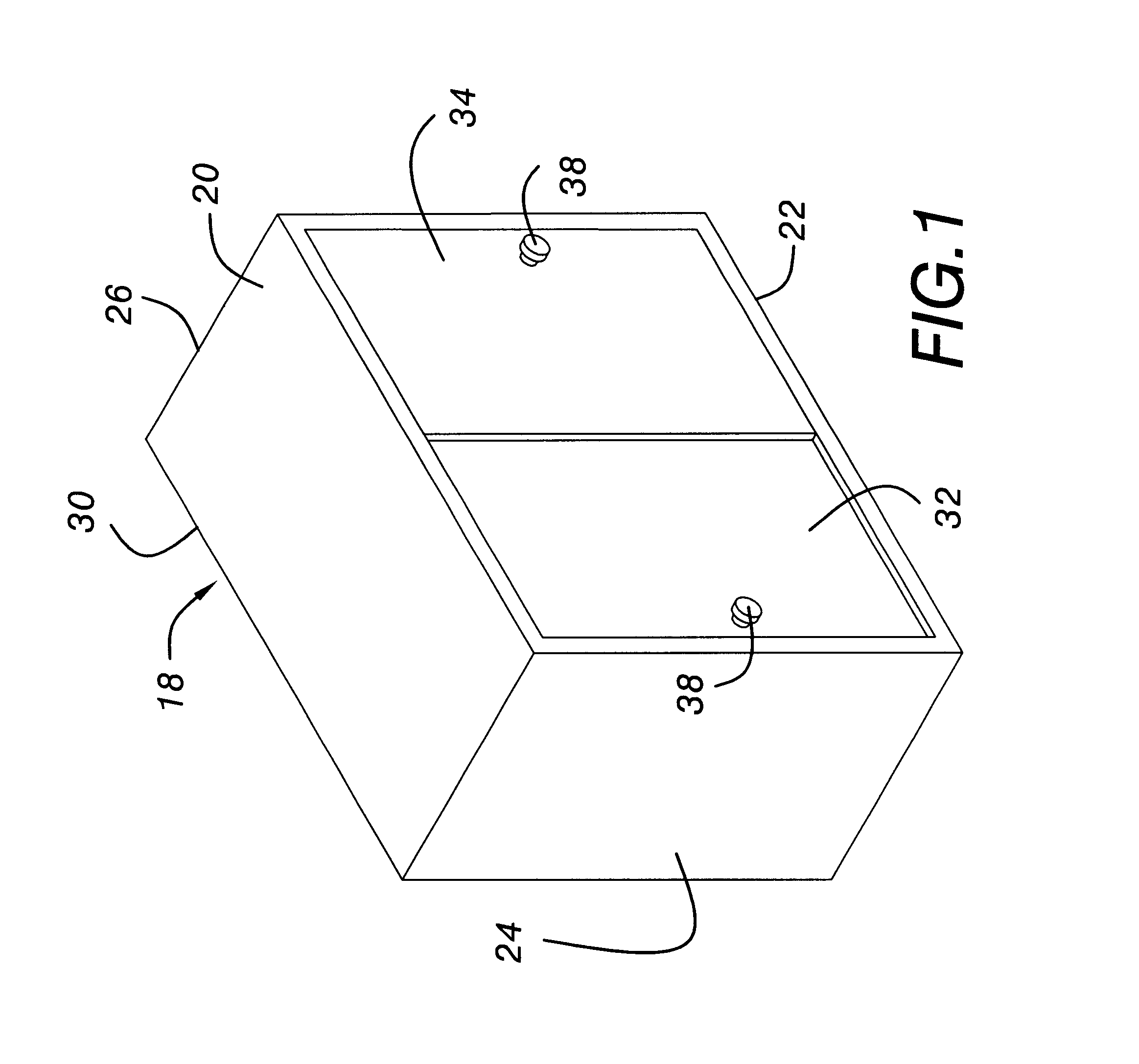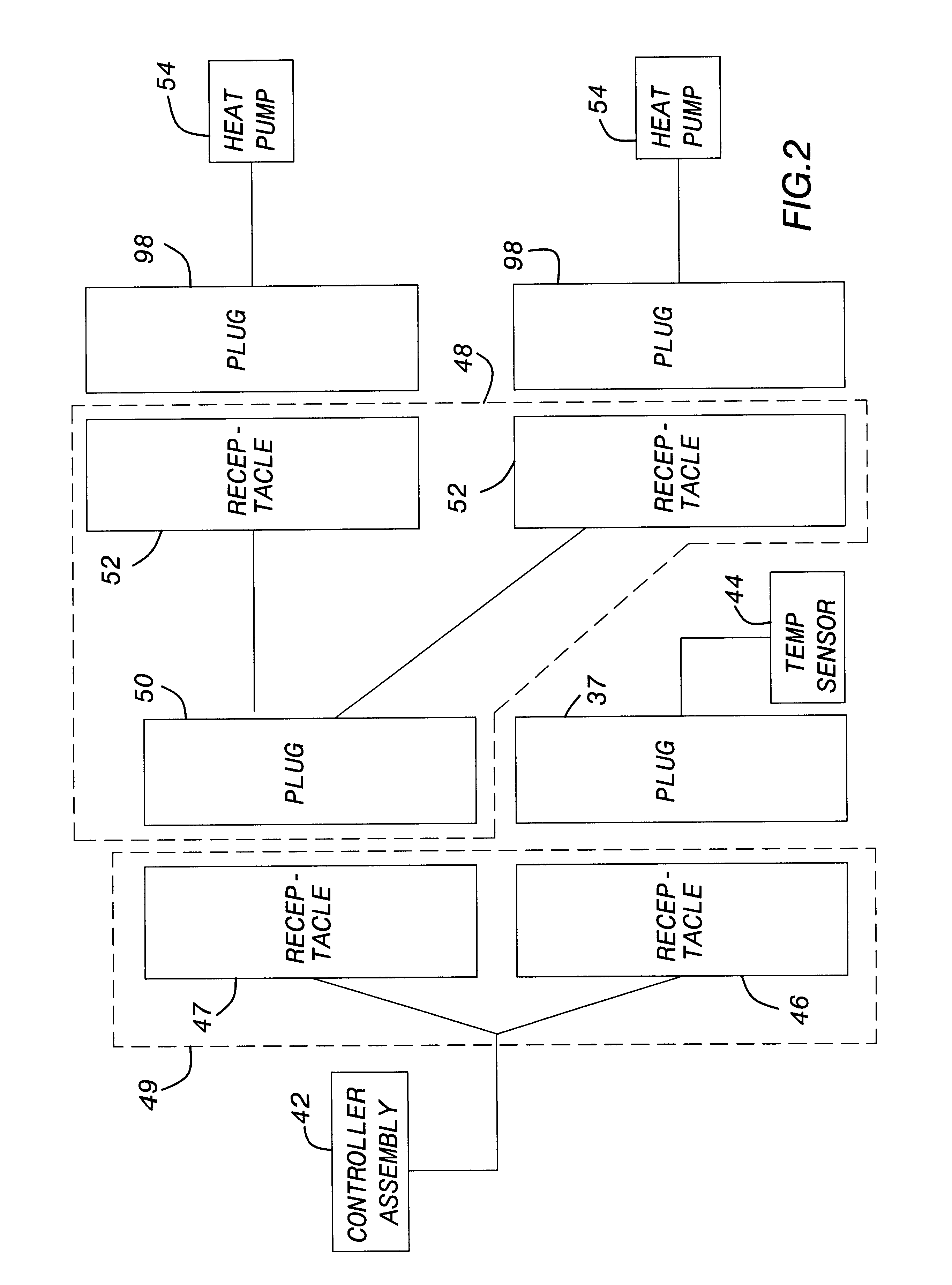Controlled temperature cabinet system and method
a temperature control and cabinet technology, applied in the field of temperature control systems, can solve the problems of merely storing medical items, not being suited for use, and a risk of injury to patients, and achieve the effect of improving heat pump efficiency
- Summary
- Abstract
- Description
- Claims
- Application Information
AI Technical Summary
Benefits of technology
Problems solved by technology
Method used
Image
Examples
Embodiment Construction
[0034]An exemplary cabinet of the type employed by the present invention for use in ambulance or other medical vehicles to contain medical items (e.g., drugs or intravenous solution contained with I.V. bags) is illustrated in FIG. 1. Specifically, cabinet 18, typically disposed along with a plurality of other cabinets within an ambulance or other medical vehicle interior, is similar in shape to a substantially rectangular box and includes top and bottom walls 20, 22 side walls 24, 26 and rear wall 30. The cabinet front typically includes doors 32, 34, preferably disposed between top and bottom walls 20, 22 and side walls 24, 26. Each wall is substantially rectangular wherein top and bottom walls 20, 22 include substantially similar dimensions, while side walls 24, 26 also include substantially similar dimensions. Rear wall 30 is disposed between top and bottom walls 20, 22 and side walls 24, 26 such that the cabinet walls and doors collectively define a cabinet interior. It is to be...
PUM
 Login to View More
Login to View More Abstract
Description
Claims
Application Information
 Login to View More
Login to View More - R&D
- Intellectual Property
- Life Sciences
- Materials
- Tech Scout
- Unparalleled Data Quality
- Higher Quality Content
- 60% Fewer Hallucinations
Browse by: Latest US Patents, China's latest patents, Technical Efficacy Thesaurus, Application Domain, Technology Topic, Popular Technical Reports.
© 2025 PatSnap. All rights reserved.Legal|Privacy policy|Modern Slavery Act Transparency Statement|Sitemap|About US| Contact US: help@patsnap.com



